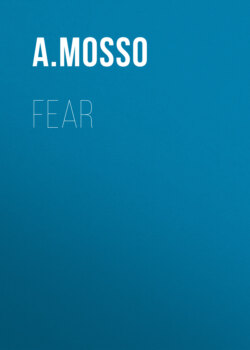Читать книгу Fear - A. Mosso - Страница 17
На сайте Литреса книга снята с продажи.
III
ОглавлениеTable of Contents
We have therefore two sorts of nerves: of sensibility and of movement. Let us now try to form a correct notion of an involuntary or reflex movement, which I shall illustrate by the following example.
Let us imagine a large house of which the entrance is at some distance from the street door. A bell is fixed inside, the wire of which, after passing through various holes, terminates in a handle near the outer door. When some one comes and pulls the handle the bell rings, and the maid opens the door by pulling at the cord inside the house. This series of actions represents what physiologists call a reflex movement. The maid is a nerve-centre, the bell-wire a sensory nerve, and the cord which opens the door a motor nerve. In the organism we see muscles or glands instead of the door, but the mechanism is similar. Just as the door-bell rings a hundred times a day on all imaginable occasions without our needing to open the door, and without the maid coming first to our study to ask what she must do; so we have in our nervous system two distinct parts: the maid, represented by the spinal cord, and the master, by the brain.
Let us now see what happens when the master is not at home, or what an animal does when its head is cut off, and only the spinal cord is left. We shall see here, too, that the more liberty the master gives to the maid, the more arrogant she grows, at last lording it over the master himself.
A decapitated frog does not die immediately; it may move for days, and if deprived of the brain only remains alive for some time.
We will consider the more usual case, namely, that of a frog of which the head has been completely cut off with a pair of scissors. The animal shivers and writhes for a few moments, then it stops, and would remain motionless if it were kept under a glass cover in a damp atmosphere, where nothing would irritate the skin. But if we touch its leg or put a drop of vinegar upon it, the animal tries at once to escape and to remove the disturbing agent from the surface of its body. If we put a drop of vinegar on the left leg it tries to wipe it off with the right, and vice versa. But if we cut off one of the legs or bind it fast, and then put a drop of vinegar on the other leg which is at liberty, the frog makes use of this same leg to rub away the drop.
At first sight this seems to be an act of intelligence. It may be maintained that it is done by choice, but we cannot say that this activity requires the guidance of the intelligence. A dog of which the spinal cord has been severed and a sleeping man make the same movements.
Neither must it be thought that these movements are only to be found in frogs and the lower animals. We shall see that in man also they perform all the most indispensable vital functions without the co-operation of the brain. Fontana, one of the most celebrated Italian physiologists, discovered, as early as the middle of the last century, that one could decapitate rabbits and guinea-pigs without causing their immediate death. And he also found that if care were taken by previously binding the most important arteries; so that the animal should not lose too much blood, and if the respiration were sustained artificially by means of bellows, it could live for some time, and show itself sensitive to external stimuli.[6]
